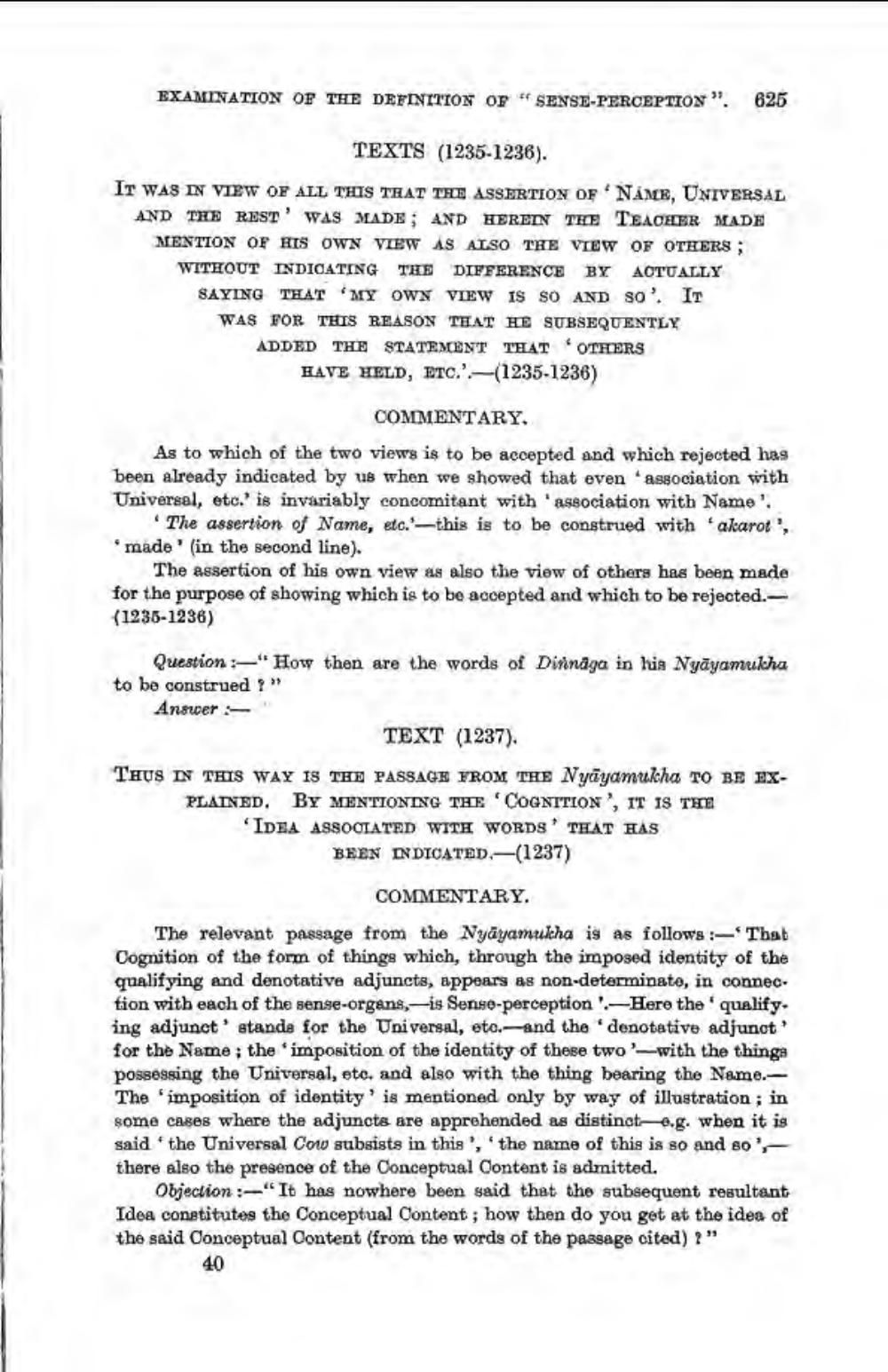________________
EXAMINATION OF THE DEFINITION OF " SENSE-PERCEPTION". 625
TEXTS (1235-1236).
IT WAS IN VIEW OF ALL THIS THAT THE ASSERTION OF NÁME, UNIVERSAL AND THE REST' WAS MADE; AND HEREIN THE TEACHER MADE MENTION OF HIS OWN VIEW AS ALSO TRE VIEW OF OTHERS; WITHOUT INDICATING THE DIFFERENCE BY ACTUALLY SAYING THAT MY OWN VIEW IS SO AND SO'. IT WAS FOR THIS REASON THAT HE SUBSEQUENTLY ADDED THE STATEMENT THAT OTHERS
HAVE VELD, ETC.'.-(1235-1236)
COMMENTARY As to which of the two views is to be accepted and which rejected has been already indicated by us when we showed that even association with Universal, etc.' is invariably concomitant with association with Name'.
The assertion of Name, etc. this is to be construed with "akarot, 'made in the second line).
The assertion of his own view as also the view of others has been made for the purpose of showing which is to be accepted and which to be rejected.(1236-1236)
Question :-" How then are the words of Dinnaga in lus Nyāyamukha to be construed ?" Answer
TEXT (1237). THUS IN THIS WAY IS THE PASSAGE FROM THE Nyāyamukha TO BE EXPLAINED. BY MENTIONING THE COGNITION, IT IS THE IDEA ASSOCIATED WITH WORDS THAT HAS
BEEN INDICATED.-(1237)
COMMENTARY.
The relevant passage from the Nyāyamulcha is as follows:- That Cognition of the form of things which, through the imposed identity of the qualifying and denotative adjuncts, appears as non-determinato, in connec. tion with each of the sense-organsis Sense-perception ' Here the qualify. ing adjunct stands for the Universal, eto.- and the denotative adjunot' for the Name; the 'imposition of the identity of these two with the things possessing the Universal, etc. and also with the thing bearing the Name.The 'imposition of identity' is mentioned only by way of illustration ; in some cases where the adjunots are apprehended as distincte.g. when it is said the Universal Cow subsists in this', 'the name of this is so and so ',there also the presence of the Conceptual Content is admitted.
Objection :--"It has nowhere been said that the subsequent resultant Idea constitutes the Conceptual Content ; how then do you get at the idea of the said Conceptual Content (from the words of the passage oited) ?"
40




